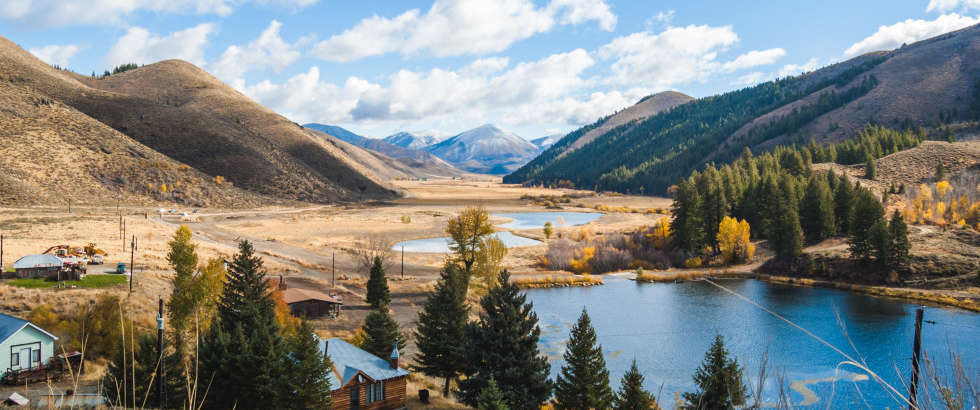
Idaho, known for its scenic landscapes and outdoor recreational opportunities, is a state that offers a high quality of life. With a population of approximately 1.8 million, it ranks as the 38th most populated state in the U.S. Idaho has been experiencing rapid population growth, driven by its attractive living conditions and economic opportunities. Bordered by Montana and Wyoming to the east, Utah and Nevada to the south, Oregon to the west, and Washington to the north, Idaho offers a diverse range of living experiences across its roughly 200 cities and towns.
Living in Idaho provides numerous benefits, including a low cost of living, a strong sense of community, and abundant natural beauty. The state's low population density allows residents to enjoy spacious living and a slower pace of life, with plenty of opportunities for outdoor activities such as hiking, skiing, and fishing. Idaho's economy is diverse, with strengths in agriculture, technology, and manufacturing. The state's rapid population growth reflects its appeal as a desirable place to live and work. The AreaVibes list of the largest cities in Idaho, based on data from the United States Census Bureau's American Community Survey, offers a comprehensive overview of Idaho cities by population, highlighting the state's most significant urban centers.
| Rank | Location | Population | Area KM2 | Median Income | Livability Score |
| 1 | Boise | 228,057 | 212 | $63,778 | 84 |
| 2 | Meridian | 107,787 | 84 | $76,403 | 83 |
| 3 | Nampa | 96,825 | 83 | $53,205 | 72 |
| 4 | Idaho Falls | 62,417 | 60 | $56,590 | 86 |
| 5 | Caldwell | 56,734 | 58 | $55,069 | 68 |
| 6 | Pocatello | 56,016 | 84 | $46,882 | 84 |
| 7 | Coeur d'Alene | 51,491 | 41 | $54,763 | 85 |
| 8 | Twin Falls | 49,819 | 49 | $50,839 | 74 |
| 9 | Post Falls | 34,971 | 38 | $62,033 | 88 |
| 10 | Lewiston | 32,853 | 45 | $54,912 | 73 |
| 11 | Rexburg | 29,064 | 25 | $33,278 | 75 |
| 12 | Eagle | 28,145 | 77 | $91,414 | 79 |
| 13 | Moscow | 25,652 | 18 | $42,262 | 86 |
| 14 | Kuna | 20,985 | 49 | $69,940 | 75 |
| 15 | Ammon | 16,403 | 19 | $55,065 | 81 |
| 16 | Chubbuck | 15,301 | 11 | $61,442 | 86 |
| 17 | Hayden | 15,049 | 27 | $57,981 | 64 |
| 18 | Mountain Home | 14,308 | 16 | $44,039 | 74 |
| 19 | Blackfoot | 11,936 | 15 | $52,360 | 82 |
| 20 | Garden City | 11,873 | 11 | $50,185 | 81 |
| 21 | Jerome | 11,824 | 14 | $47,389 | 73 |
| 22 | Burley | 10,476 | 16 | $48,065 | 74 |
| 23 | Star | 9,819 | 17 | $71,759 | 71 |
| 24 | Sandpoint | 8,692 | 10 | $46,712 | 77 |
| 25 | Rathdrum | 8,672 | 14 | $64,167 | 74 |
| 26 | Hailey | 8,575 | 9 | $54,622 | 69 |
| 27 | Middleton | 8,005 | 14 | $56,225 | 76 |
| 28 | Payette | 7,655 | 10 | $47,272 | 64 |
| 29 | Emmett | 6,942 | 7 | $39,719 | 65 |
| 30 | Rupert | 5,820 | 5 | $41,618 | 70 |
| 31 | Preston | 5,477 | 18 | $53,094 | 77 |
| 32 | Fruitland | 5,390 | 6 | $46,974 | 70 |
| 33 | Weiser | 5,358 | 8 | $37,552 | 76 |
To compile the list of the largest cities in Idaho, AreaVibes used census data from the United States Census Bureau's American Community Survey (ACS). The American Community Survey releases updated estimates annually, offering a valuable resource for understanding the evolving dynamics within communities. These estimates are crucial for officials, community leaders, businesses, and local residents as they provide insights into demographic, economic, and social changes. By analyzing ACS data, stakeholders can make informed decisions, plan for future developments, and address the needs of their communities effectively. The detailed population information from the ACS helps track trends, allocate resources, and implement policies that enhance the quality of life for all residents.
The map above serves as an excellent tool for discovering the most and least densely populated states across the United States. By highlighting both the states with the highest and lowest population density, it offers a comprehensive view of the nation's demographic landscape. This visual representation allows users to easily compare different regions, making it a valuable resource for anyone considering relocation or investment opportunities. Living in high density states could give you access to the following benefits: additional economic opportunities, enhanced amenities, improved health care, better infrastructure and technological advancement. Less densely poupulated states on the other hand, often have a lower cost of living, reduced traffic, closer-knit communities, abundant natural spaces and lower crime rates.